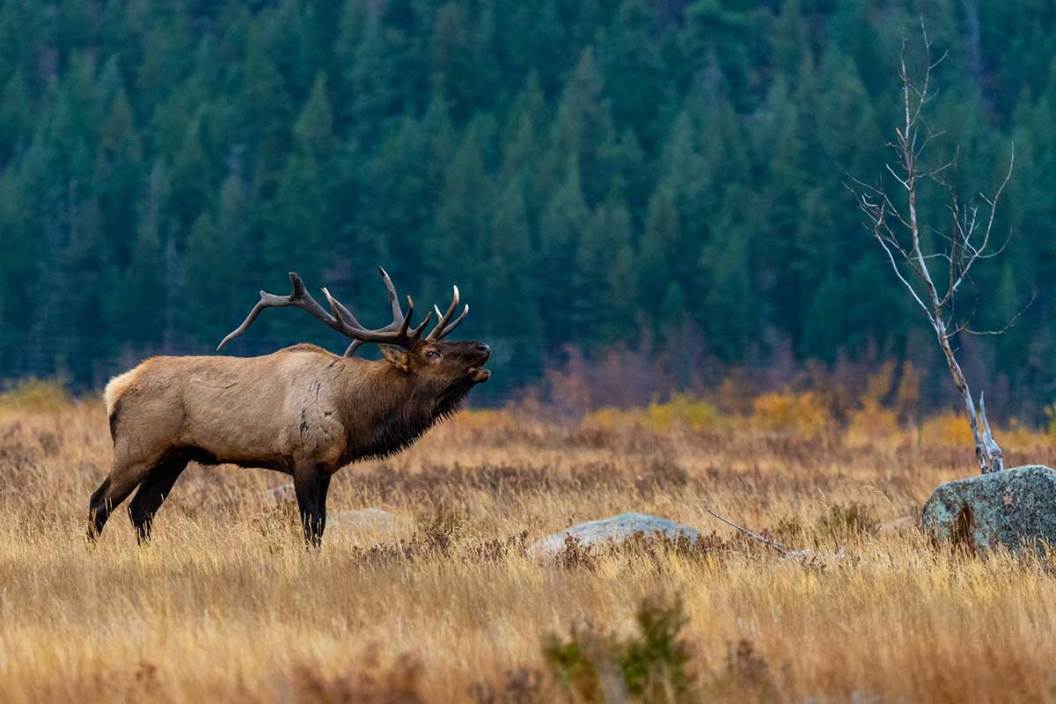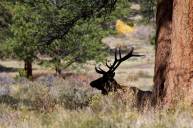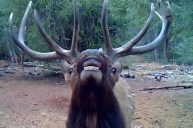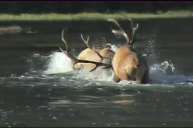Bugles, chuckles, glunks, barks, and mews... Make no mistake, elk are highly communicative herd animals that make a lot of different noises. They span in range from deep and growly to high and shrieky. The different sounds they use each have a specific purpose and express emotions based on different tones, pitch, and duration of the sounds they produce. If you want to decipher those meanings, and apply what you learn to your elk hunting strategy, this is the elk sound explanation you need.
Bugle
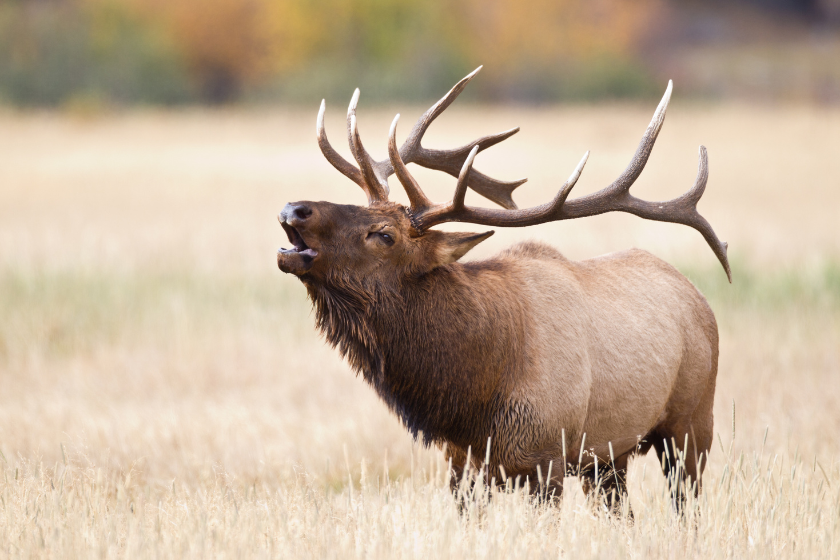
rpbirdman via Getty Images
Arguably the most recognizable of all the elk sounds, a bugle is a sound produced by a bull elk and it's done for many reasons, mainly as a mating call to attract cow elk. Bulls let out a bugle to alert the cow elk nearby know that they are there and seeking a mate. This same bugle sound is also used to assert dominance over other bulls in the area. It is a signal for other bull elk that this location has been claimed and to stay away.
Elk bugle any time of the year, but bugling activity peaks during the rut season and bugles can be depicted over several miles. For the weeks leading up to, during, and shortly after the rut, bull elk can be heard bugling into all hours of the night and even during daytime hours. Many elk will bugle so much during the rut that their voice can sometimes become noticeably hoarse. That's usually an indicator of a mature, dominant, in-control bull that might be worthy of targeting.
Chuckle

TenleyThompson via Getty Images
The elk chuckle is a series of grunts that are either added to a bugle's end or expressed independently. Though called a chuckle, it sounds more like a repetition of grunting noises than giggles or laughter. Chuckle activity peaks with bugle activity around the rut. It has the same purpose, too. It seeks to attract cow elk and claim territory from the competing bull elk. Hearing chuckles can be treated much in the same way as hearing bugles. Chuckling bulls are occupied with chasing females and asserting dominance.
Glunk

brytta via Getty Images
A glunk is a sound bull elk make that is not nearly as commonly heard as bugling or chuckling. Glunking is used to locate cow elk. It is a deep-toned, muffled-sounding guttural call bulls make when they are nearby cows. If you can hear an elk glunk, it might mean a curious bull is nearby and seeking the response of a cow.
Bark
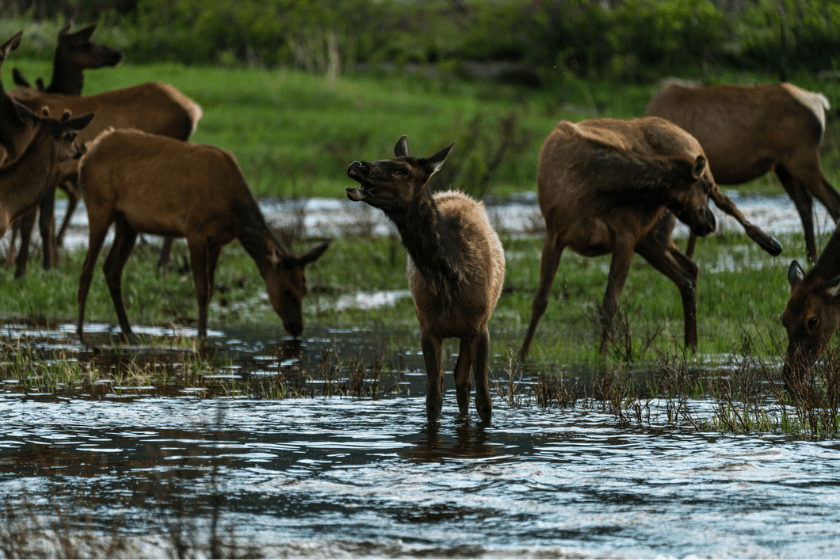
Sparty1711 via Getty Images
A bark is a signal that both bull and cow elk use to notify the rest of the herd of danger or disturbance. It is a high-pitched sound that resembles a dog bark. By the time an elk barks, they have already figured out there is a hunter, or something else, nearby. They have either winded, heard, or seen the threat, and the gig is up. Witnessing a bark, and especially several barks, means you can probably kiss that hunt's chances goodbye.
Mew
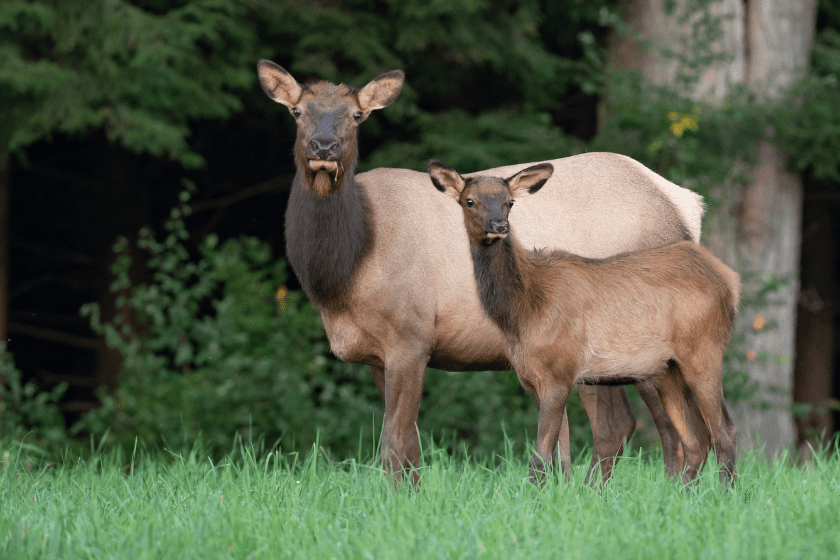
Harry Collins via Getty Images
An elk mew is a sound made by cow elk and calves to bond and signal to each other. It is often used by elk the same way humans might use "Marco Polo," the signal-and-respond game, to locate each other in a crowd. Mewing sounds are high-pitched and can even resemble feline mewing sounds, though much more powerful. One notable instance when mewing is used is when a calf and mother become separated. The calf will instinctively begin mewing loudly as a panic response, and it is typically effective. It activates not only the actual mother cow's maternal instincts, but gets a similar response out of any maternal cow nearby. Sometimes even unrelated cows will urgently respond by running to the mewing calf.
Estrus Call
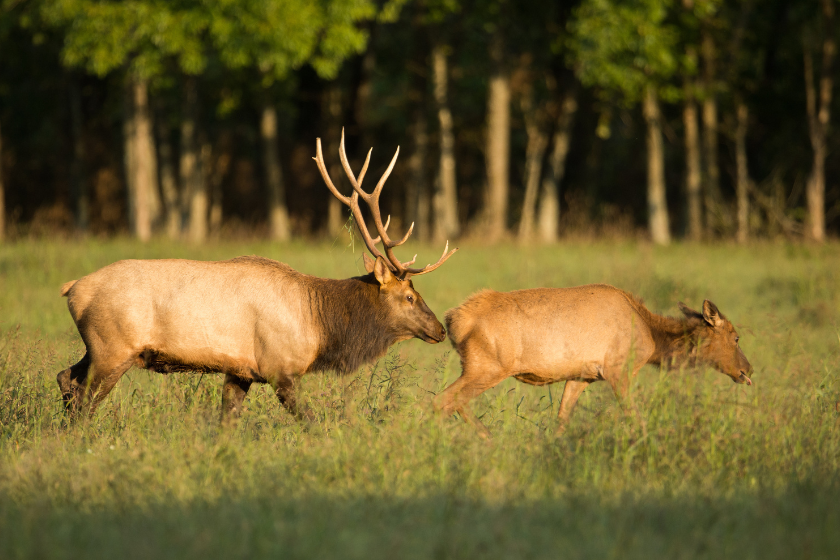
jcrader via Getty Images
Cow elk have a specific sound to notify bulls that they are ready to mate. This estrus call is often referred to as a cow elk in heat. It is a loud, whiney-toned call that carries for long distances. This is the sort of sound that tells you there may very well be a bull elk closing in.
Calling Elk
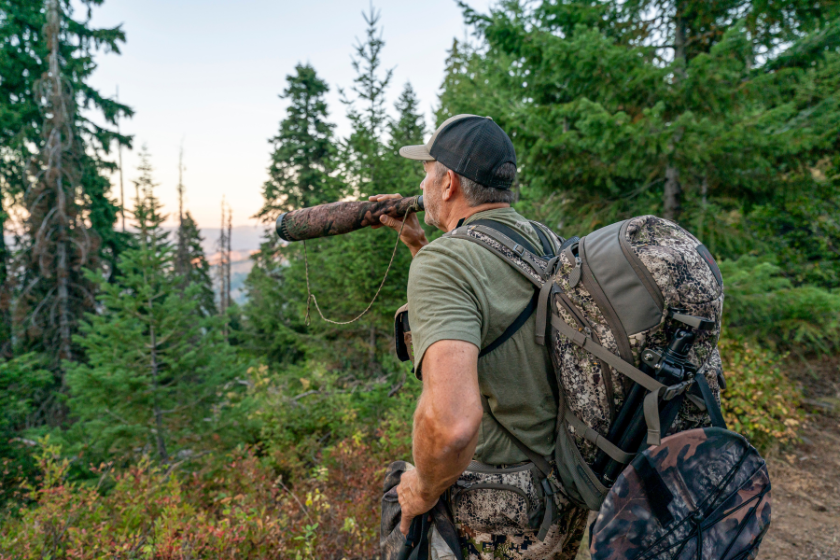
Fly View Productions via Getty Images
Knowing what sounds elk make and why they make them is a start. The next step is knowing when to utilize those specific noises to influence elk behavior. Successfully replicating elk sounds in the field while hunting can be more complicated than it seems. Elk are eloquent communicators. If a hunter is not using the correct calling method for the situation, it is effectively gibberish to the elk. Hunters should take time to familiarize themselves with the right call for any case they may find themselves in during elk hunting season.
